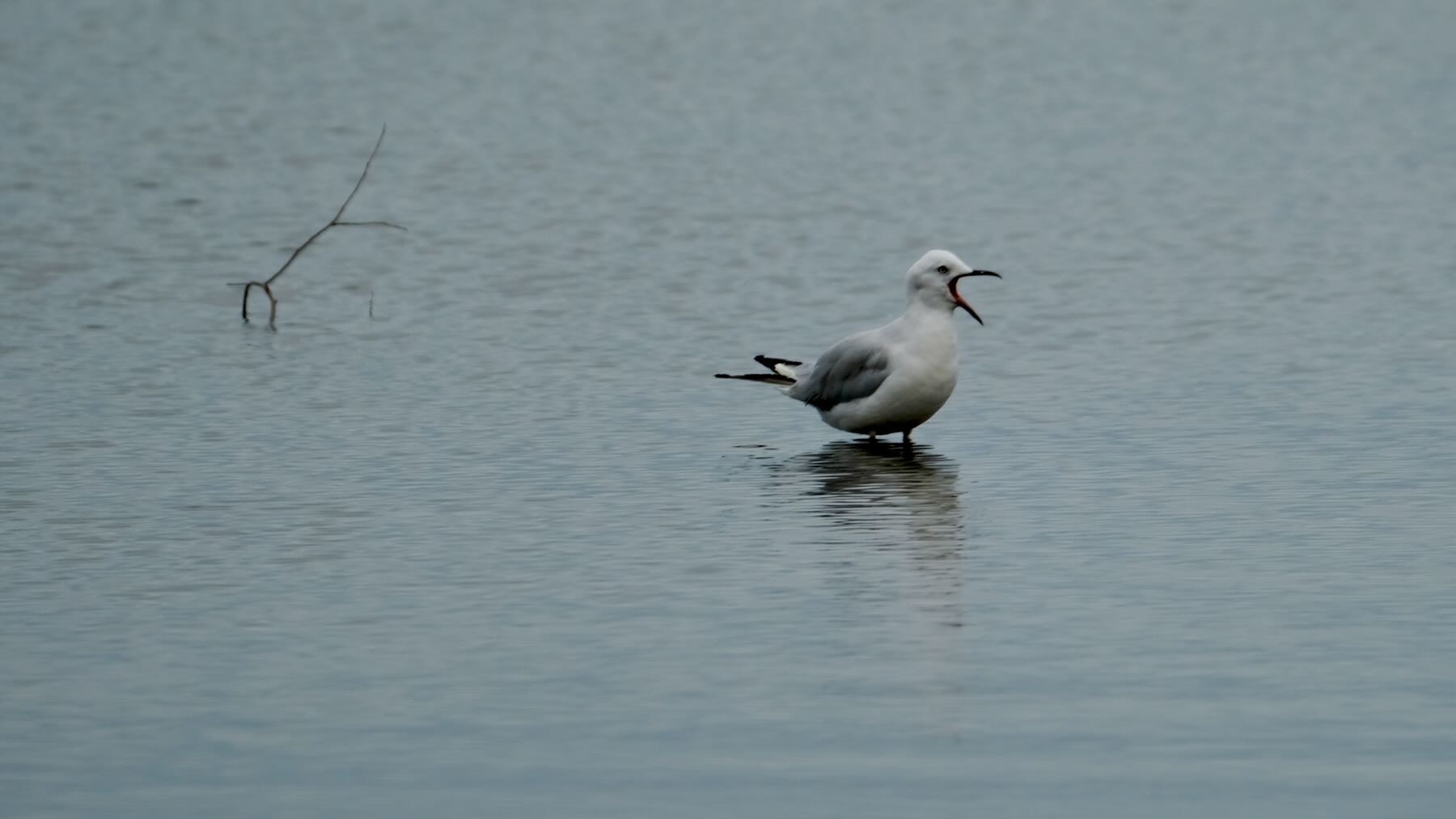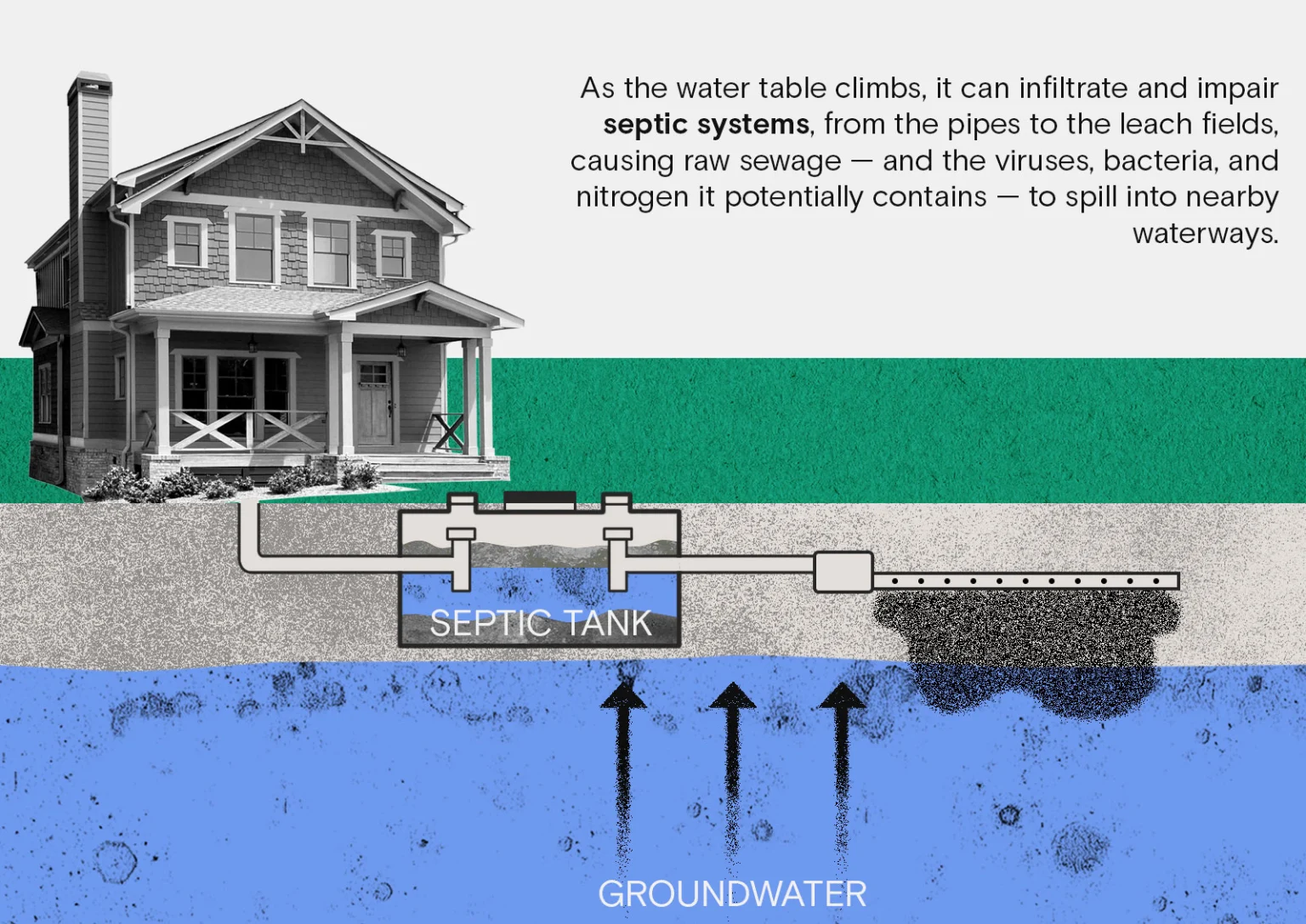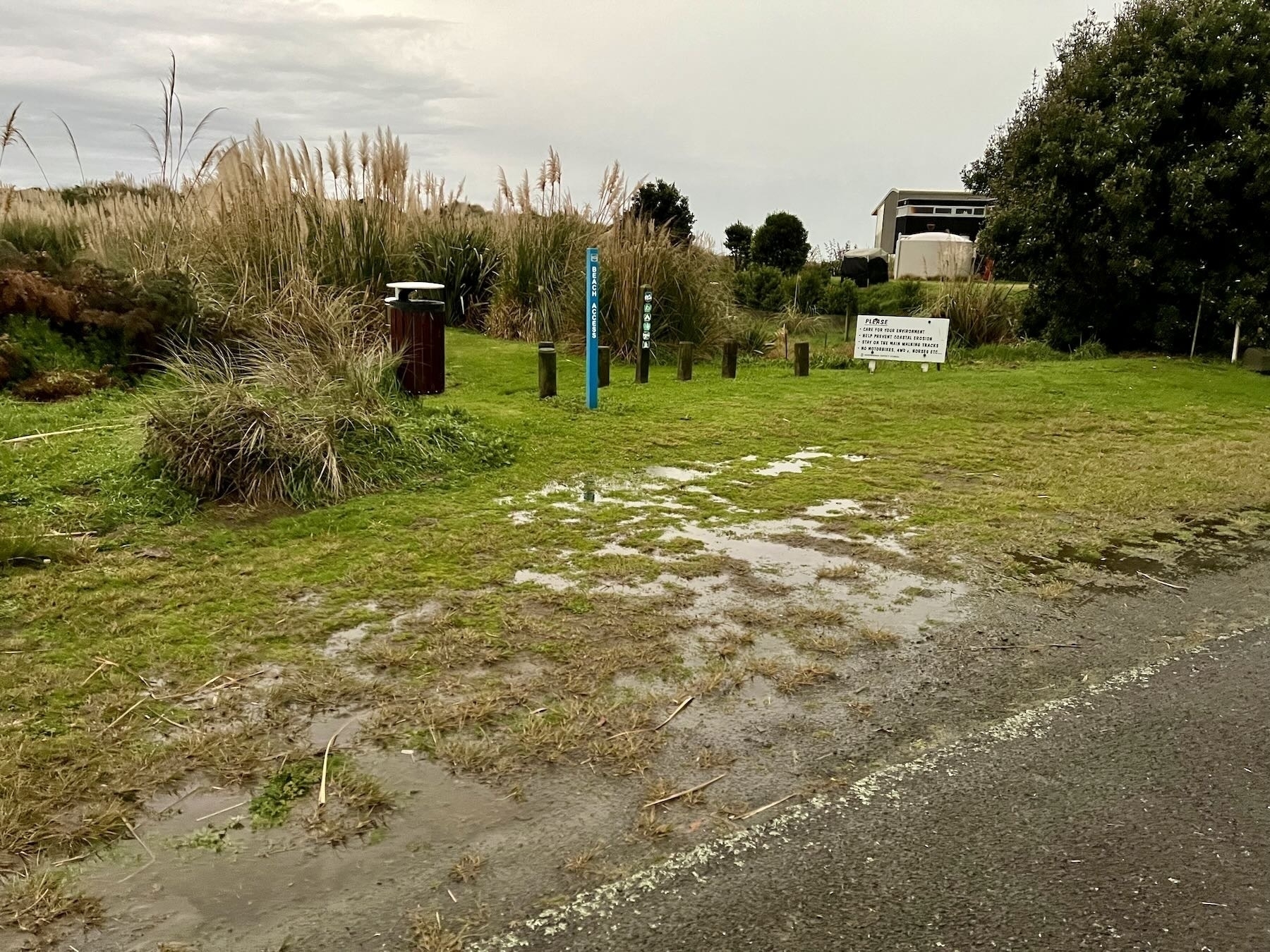
Some days I stroll down to the beach and look out at the sea. It’s pretty clear really: beach here, sea there. Or so you’d think.
It’s not actually that simple — for one thing, the sea doesn’t just exist above the solid surface. It saturates the ground below it and beside it so salt water can reach underground far into the landscape.
If I had X-ray vision I could probably just look down to see the sea.
This article, although focused on the US, has incredibly interesting and important information about the interplay between fresh water and groundwater. Because physics is physics wherever we are on the globe it informs us too — Rising groundwater threatens clean air and water across the US :
Oceans do not stop where the sea meets the shore. Along the coasts, saltwater creeps through porous soil and rock, creating an underground saltwater table that can extend miles inland.
As the sea level rises, it helps push up groundwater …
And, about that groundwater:
Climate change is driving a rise in groundwater levels through an increase in rainfall. Heavy precipitation — particularly when it comes over a short period of time — can cause lakes and rivers to flood and saturate the ground directly. That excess water then percolates down through the soil, raising the groundwater below

So what does that mean for septic tanks?
A working septic system depends on the distance between its underground tank and the groundwater below. Waste flows from homes into a tank, where solids sink to the bottom to be eaten by bacteria and liquids flow into a nearby field. There, the wastewater seeps through the earth, where it’s filtered by soil and digested by bacteria. Eventually, clean water trickles into the groundwater.
When rising seas narrow the gap between a septic tank and groundwater, waste can’t be properly treated.
As a community situated beside the sea and a river, groundwater, heavy rain and sea level are matters of great concern to us. Our stormwater flows into the river at the bottom end of Hank Edwards Reserve — See Stormwater discharge into the Waikawa River. It would be interesting to know what is the state of repair of that discharge pipe — is it in good repair, has it been checked recently for blockages or breaks? If that pipe has problems it could lead to water backing up around Waikawa.
Perhaps we can find a hydrologist to inform us about the delineation line locally between the freshwater aquifer and saline ingress? It seems hydraulic pressure from the sea keeps fresh land-based water from draining freely so when there are big tides groundwater levels increase.
Water is a big issue for us. Recently septic tanks have failed to function correctly, high groundwater has caused ponding and puddles across roads. High tides come ever closer to the land, starting to threaten the lower lying areas — part of Waikawa Beach is designated a Coastal Hazard area.
These issues must be top of mind.

